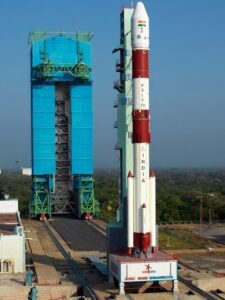The Indian Space Research Organization’s (ISRO’s) historic missions are strengthening India’s position in science around the world. After the success of Chandrayaan-3 on the Moon’s South Pole on August 23, ISRO scientists started working for the Sun mission.
ISRO launched the Aditya-L1 mission 10 days right after the success of Chandrayaan-3 This spacecraft has successfully passed the first test.
The next few years will be crucial for ISRO as it plans for new missions. Amidst this, ISRO’s next mission, XPoSat (X-ray Polarimeter Satellite), has kicked off on the first day of 2024.
The PSLV launched 10 payloads developed by start-ups, education institutions and ISRO centres.

It has been informed by ISRO that XpoSat started its journey from the Satish Dhawan Space Centre on a Polar Satellite Launch Vehicle (PSLV), in Sriharikota at 9:10 am on January 1, 2024.
It’s going to be a milestone in India’s space research. This type of artificial satellite has been launched into space only once before. NASA launched Imaging X-ray Polarimetry Explorer (IXPE) in 2021. India is the second country after America to launch X-ray Polarimeter Satellite (XPoSat satellite).
Main Aims behind XPoSat
Unlike previous missions that focused predominantly on imaging, time-domain studies, and spectroscopy, XPoSat aims to explore the polarization of intense X-ray sources, introducing a novel dimension to X-ray astronomy, the space agency said.
The total budget of this mission to ISRO is about 950 crore rupees.

How will it work?
XPoSat’s pulsars will study 50 of the brightest known sources in the Universe, including black hole X-ray binaries, active galactic nuclei, neutron stars and non-thermal supernova remnants.
By analyzing X-ray polarization signatures, scientists can measure the mass and rotation of accreting black holes, explore accretion flows, outflows and jets, infer strong magnetic fields, and uncover radiation regions and particle acceleration processes in pulsars.
The life span of this new mission is 5 years. This satellite will be in the position of 500 to 700 km of the earth’s orbit. It will get placed into a Low Earth Orbit (LEO) at an altitude of about 650km and an inclination of less than about 6°.
According to ISRO, the X-Ray Polarimeter Satellite will have two main payloads – one developed by Bengaluru-based Raman Research Institute (RRI) and the other developed by ISRO’s UR Rao Satellite Centre (URSC) .These payloads enable simultaneous studies of temporal, spectral, and polarisation features of bright X-Ray sources.
The primary payload (POLIX)
POLIX (Polarimeter Instrument in X-rays), will work as an X-ray Polarimeter designed for astronomical observations within the medium energy band of 8-30 keV. It will also observe bright astronomical sources across various categories.
The Another Payload ( XSPECT)
XSPECT, another payload is an X-ray Spectroscopy and Timing instrument. It is designed to offer fast timing and spectroscopic resolution in soft X-rays (0.8-15 keV), and it will observe a variety of sources, including X-ray pulsars, black hole binaries, low-magnetic field neutron stars (NS), active galactic nuclei (AGNs), and magnetars.
ISRO’s PSLV-C58 Mission is to launch XPoSAT Satellite into an Eastward low inclination orbit. After injection of XPoSAT, the PS4 stage will be re-started twice to reduce the orbit into a 350 km circular orbit to maintain in 3-axis stabilized mode for Orbital Platform experiments. The PSLV Orbital Experimental Module-3 experiment will be executed meeting the objective of 10 identified payloads, supplied by ISRO and IN-SPACe,” states ISRO.

About 10 Other Payloads
Aside from XPoSAT, the main satellite, the PSLV will carry 10 more instruments to space on its last stage.
They are the Radiation Shielding Experimental Module (RSEM) by TakeMe2Space, the Women Engineered Satellite (WESAT) by LBS Institute of Technology for Women, the BeliefSa-t0 Amateur Radio Satellite by K.J. Somaiya Institute of Technology, the Green Impulse Transmitter (GITA) by Inspecity Space Labs Private Limited, the Launching Expeditions for Aspiring Technologies-Technology Demonstrator (LEAP-TD) by Dhruva Space Private Limited.
The other five include two instruments from Bengaluru-based firm Bellatrix Aerospace—’RUDRA 0.3 HPGP,’ the green monopropellant thruster, and ‘ARKA-200,’ a heater-less hollow cathode for Hall thrusters—two payloads by Isro’s Vikram Sarabhai Space Centre (VSSC), and one by the Physical Research Laboratory (PRL).
The two VSSC instruments are ‘Fuel Cell Power System (FCPS)’ for demonstration of fuel cell and Silicon-based high energy cell, while the PRL payload, the Dust Experiment (DEX) will measure interplanetary dust count.











